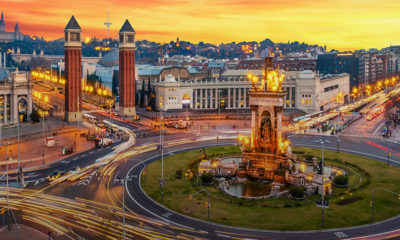NEWS
Riptides 101: How to Stay Safe in a Rip Current
Published
2 years agoon
 Source: iStock via Getty Images
Source: iStock via Getty Images
As we head off to vacation on sun-soaked beaches, it’s important to be aware of the hidden dangers that lurk beneath the surface. Among these dangers, one of the most treacherous is the riptide. Often misunderstood and underestimated, riptides can turn a day of fun and relaxation into a potentially life-threatening situation. But how do you spot a riptide, and what should you do if you get caught in its powerful current?
A riptide, also known as a rip current, is a powerful channel of water that flows away from the shore. They typically form when water pushed toward the beach by waves finds an escape route back to the sea. Riptides can occur at any beach with breaking waves, especially near piers, jetties, and sandbars.
Riptides are deceptively dangerous due to their strong currents, which can easily overpower even the strongest swimmers. They can pull swimmers away from the shore at speeds of up to eight feet per second, faster than an Olympic swimmer’s average speed. Attempting to swim against a riptide can quickly exhaust a person, leading to fatigue and panic, exacerbating the risk of drowning.
Spotting a Riptide:
Recognizing the signs of a riptide is essential for staying safe in the water. Look for the following indicators: * Noticeable differences in the color and clarity of the water. * A line of foam, seaweed, or debris moving seaward. * An area of the ocean where waves are not breaking or appear choppier. * A channel of turbulent or agitated water extending from the shore.
To ensure your safety and that of your loved ones, it is crucial to follow these precautions:
Education and Awareness: Familiarize yourself with local beach conditions, warning signs, and advisories. Check weather reports and ask lifeguards about riptide activity before entering the water, especially if visiting a new beach.
Swim Near Lifeguards: Always choose beaches patrolled by lifeguards and take note of their instructions. They possess the expertise to identify riptides and provide immediate assistance.
Float, Don’t Fight: If caught in a riptide, remember the phrase “Float, Don’t Fight.” Stay calm, conserve energy, and swim parallel to the shoreline until you’re out of the current. Once free, swim back to the shore using the waves to assist you.
Buddy System: Swim with a friend or family member. Having someone with you increases the chances of prompt assistance if you encounter trouble.
Beach Safety Tips: Avoid swimming at unguarded beaches, stay within designated swimming areas, and refrain from using inflatables or boogie boards in areas prone to riptides.
More From Bon Voyaged
-


Spain Will Open Up to Vaccinated American Tourists in June
-


Universal Orlando Brings Back “Two Days Free” Deal
-


Passenger Gives Birth on Flight From Tokyo to Dubai
-


New York City Museums Will Reopen This Month
-


Airbnb Announces New ‘Airbnb Adventures’ Product
-


Chipotle is Opening a New Restaurant Concept
-


JetBlue Founder Launches New ‘Breeze’ Airline
-


This Island Has Been Named Italy’s ‘Capital of Culture’ for…
-


Portugal Wins Big at Travel Awards Ceremony
-


A New Multi-Billion Dollar Theme Park is Opening in This…
-


Lions Test Positive for COVID at Spanish Zoo
-


Travel Experts Recommend Booking Spring Break Travel Now

